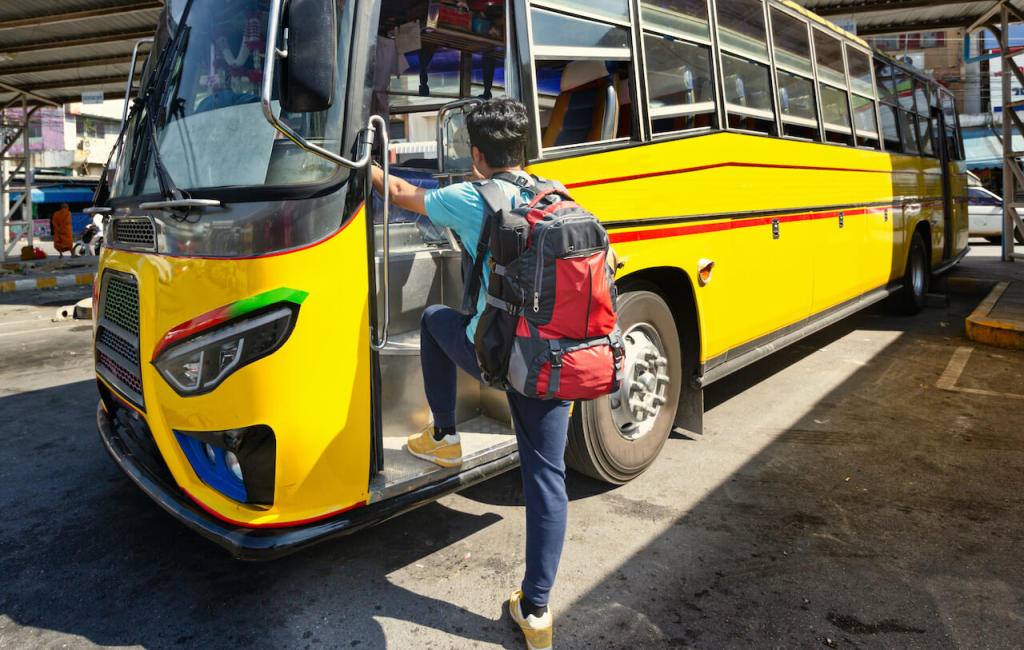
Buses used to traverse the length of EDSA’s lanes, weaving through private cars and other vehicles in the city’s heavy traffic. But in November 2020, the bus routes along EDSA were streamlined upon the creation of the Libreng Sakay program called the EDSA Carousel. On top of the streamlined routes, bus rides are offered for free. The program is part of the Bayanihan to Recover as One Act to help alleviate the burden of transportation and related costs on citizens.
Since its inception, the EDSA Carousel has served about 81 million passengers, according to the LTO. The buses run from Parañaque Integrated Terminal Exchange (PITX) to Monumento, effectively connecting Metro Manila from south to north and vice versa. While it’s been a huge help, the Libreng Sakay-EDSA Carousel program is bound to be terminated by the end of the year on December 31. In response, the government is setting its sights on privatizing the EDSA Busway System.
EDSA Busway Privatization
The Department of Transportation (DOTr) has allocated Php1.2 billion for the EDSA bus service contract. Even so, transportation secretary Jamie Bautista says that this would not be enough to continue the Libreng Sakay program. Bautista claims that the current system can cost up to millions of pesos to operate daily, so the budget may only sustain Libreng Sakay-EDSA Carousel for a few months.
In September 2022, DOTr announced that it will be conducting a study to assess said privatization. As the study can span for over a year, the Management Association of the Philippines (MAP) has raised concerns over how this lengthy study may spoil investment interests from the private sector. So far, the study has found that the EDSA Carousel has quite a large headroom to fill in terms of performance. DOTr’s study showed that the EDSA Carousel performed 25% poorer compared to national busways in other countries according to international standards. The results show how the DOTr has to improve the infrastructure and services of the EDSA busway, a fact that Bautista acknowledges.
Bautista suggests a collaboration between the DoTr-MAP, which focuses on improving the efficiency of the EDSA Carousel operation. “Results from this possible joint venture can serve as a prototype for other PPP endeavors for various modes of transport. Either for both, we can foster identifying next action steps to enable us to move forward and deliver a better passenger experience for EDSAc (EDSA Carousel),” he said.
As a result, MAP came up with a proposal to privatize the EDSA Carousel. Their plans state that while the bus network infrastructure and advancements will be accounted for by the government, private concessionaires will manage and administer the system on a greater scale. Bautista underscores how a successful joint venture can serve as a prototype for other endeavors in the country’s various modes of transport.
Interested investors from the private sector urge government authorities to speed up the study and the implementation of the EDSA busway privatization. They highlighted the efficacy of the Jakarta Busway (the longest bus system in the world) and the Guangzhou system (one of the world’s most efficient) as standards to look up to as privatization falls into place.
Amid moving forward with the privatization, the EDSA busway continues to expand, with new bus stops opening up. On December 28, a new stop was added in Tramo, Pasay City while three more stops will be opened soon: one between North Avenue and Quezon Avenue, Quezon City; one on Ormoc Road, Quezon City, and another one in Magallanes, Makati.
To serve the existing stops and the new ones, the immediate privatization of the busway system can be an effective solution. In fact, many private sector groups have already shown interest in bidding for the busway operations with official proposals yet to surface.
Effects of the privatization

Privatizing the EDSA busway system will be the first of its kind in the Philippines, so there’s no definite way to get accurate projections. However, we can look to other bus systems elsewhere to see the effects of privatization.
While it may be true that private businesses operate for profit and can find routes and times that serve their interests, the government can intercept and come to an agreement over operating at routes and times to serve the public. The busway privatization will also require a central information dissemination system so that people can find timely transport updates and timetables. This is particularly important if the privatization involves several companies.
On the other hand, perhaps the greatest advantage of the EDSA busway privatization will be that the market can be served as economically and efficiently as possible without much political interference and bureaucracy, which can prevent quick adjustments to public transit agencies. This way, private operators will be able to change routes, schedules, and fares as necessary without the need for public hearings and approvals.


